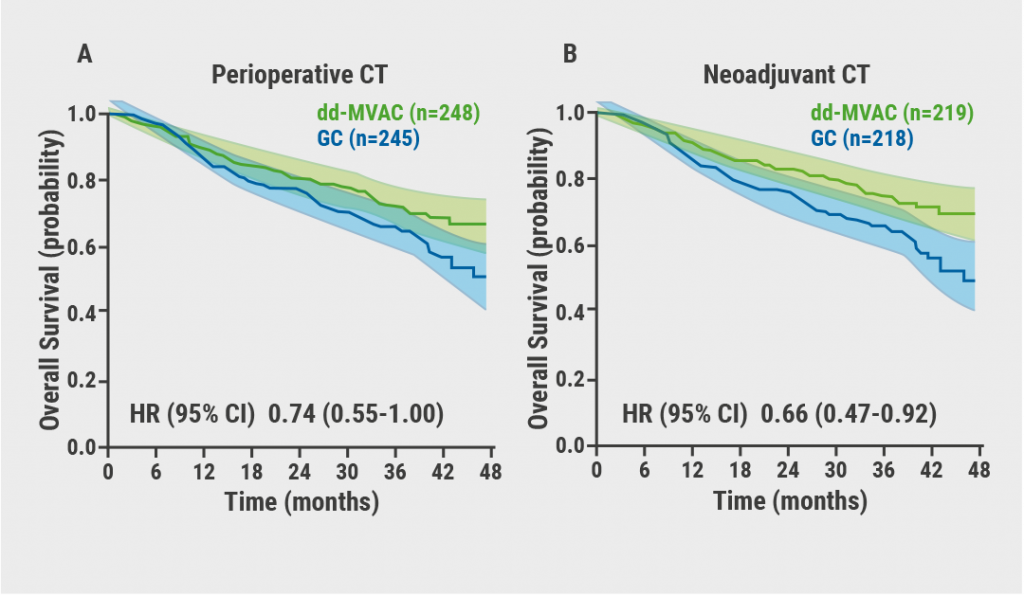https://doi.org/10.55788/36fd57da
Neoadjuvant dual targeting of HER2 with trastuzumab/pertuzumab in addition to chemotherapy is the standard-of-care for high-risk HER2-positive breast cancer [1]. Prior findings have indicated that the immune system plays a central role in the prognosis and achieved response with HER2-directed approaches, and this has led to the exploration of pairing immune checkpoint inhibitors with HER2-directed antibodies.
The phase 3 APTneo trial (NCT03595592) evaluated the efficacy and safety of adding atezolizumab to neoadjuvant dual targeting of HER2 and chemotherapy, and the value of also using anthracyclines in this setting. APTneo enrolled 661 patients with operable or locally advanced HER2-positive breast cancer who had not been exposed to chemotherapy. Participants were randomised 1:1:1 to 3 arms. Participants in arm A received neoadjuvant trastuzumab/pertuzumab (HP) plus carboplatin/paclitaxel (CT) for 6 cycles, and another 12 cycles of HP after surgery. Patients in arm B1 received neoadjuvant anthracycline/cyclophosphamide (AC) plus atezolizumab for 3 cycles, followed by 3 cycles of HPCT plus atezolizumab; after surgery they received 12 cycles of HP plus atezolizumab. Patients in arm B2 received HPCT plus atezolizumab for 6 cycles, followed by surgery and adjuvant HP plus atezolizumab for 12 cycles. The primary aim of APTneo is to compare event-free survival (EFS) 5 years after randomisation, a secondary outcome is the rate of pathological complete response (pCR). Dr Luca Gianni (IRCCS Ospedale San Raffaele, Italy) presented the first results concerning pCR rates [2].
pCR rates (ypT0/is ypN0) were 52.0%, 61.9%, and 53.6% in arm A, arm B1, and arm B2, respectively. The pCR rate difference between arm A and arm B1 was statistically significant (P=0.022). In addition, in a multivariate analysis, PD-L1-positivity, oestrogen receptor (ER)-negativity, and the presence of ≥30% stromal tumour-infiltrating lymphocytes (TILs) were associated with a higher probability of pCR.
“These results show that the addition of atezolizumab to neoadjuvant therapy for patients with HER2-positive early breast cancer increases the pCR rate. In addition, an exploratory analysis suggests either a direct anthracycline effect or a mechanistic enhancement of anthracyclines with atezolizumab,” concluded Dr Gianni. The study continues follow-up to assess the primary endpoint of EFS.
- Cardoso F, et al. Ann Oncol. 2019;30:1194-1220.
- Gianni L, et al. Pathologic complete response (pCR) of neoadjuvant therapy with or without atezolizumab in HER2 positive, early high risk and locally advanced breast cancer: APTneo Michelangelo randomized trial. Abstract LBO1-02, SABCS 2023, 5–9 December, San Antonio, TX, USA.
Copyright ©2024 Medicom Medical Publishers
Posted on
Previous Article
« Adjuvant ribociclib improves IDFS in early breast cancer Next Article
OS benefit of adjuvant T-DM1 in early breast cancer with residual disease after neoadjuvant therapy »
« Adjuvant ribociclib improves IDFS in early breast cancer Next Article
OS benefit of adjuvant T-DM1 in early breast cancer with residual disease after neoadjuvant therapy »
Table of Contents: SABCS 2023
Featured articles
Olaparib maintenance has favourable safety profile in TNBC
Exercise programme improves quality of life for patients with metastatic breast cancer
Living With & After Breast Cancer
Exercise programme improves quality of life for patients with metastatic breast cancer
Fast menstrual resumption after interruption of endocrine therapy
Pregnancy is not contraindicated in pathogenic BRCA carriers
Early Breast Cancer
Highest benefit of neoadjuvant nivolumab in breast tumours with high PD-L1 expression and/or low ER expression
(More) axillary surgery does not influence long-term recurrence
Neoadjuvant chemotherapy may help patients skip regional nodal irradiation
No radiotherapy after breast-conserving surgery is safe in selected younger patients
HER2-Positive Breast Cancer
Tucatinib improves PFS in metastatic, HER2-positive breast cancer
OS benefit of adjuvant T-DM1 in early breast cancer with residual disease after neoadjuvant therapy
Atezolizumab improves pCR in HER2-positive early breast cancer
HR-Positive/HER2-Negative Breast Cancer
Adjuvant ribociclib improves IDFS in early breast cancer
Addition of inavolisib to palbociclib and fulvestrant reduces risk of progression
Endocrine therapy response provides information on need of adjuvant chemotherapy
monarchE: No predictive biomarkers revealed with molecular profiling
No predictive biomarkers found in PALLAS
Triple-Negative Breast Cancer
Bilateral mastectomy and breast-conserving surgery have equal impact on breast cancer-specific mortality in pathogenic BRCA1 carriers
Olaparib maintenance has favourable safety profile in TNBC
High pCR with neoadjuvant nivolumab/chemotherapy in stage I–II TNBC
Related Articles

November 19, 2021
Better survival with neoadjuvant dose-dense MVAC regimen in MIBC
June 25, 2019
Electromagnetic navigation bronchoscopy
© 2024 Medicom Medical Publishers. All rights reserved. Terms and Conditions | Privacy Policy

